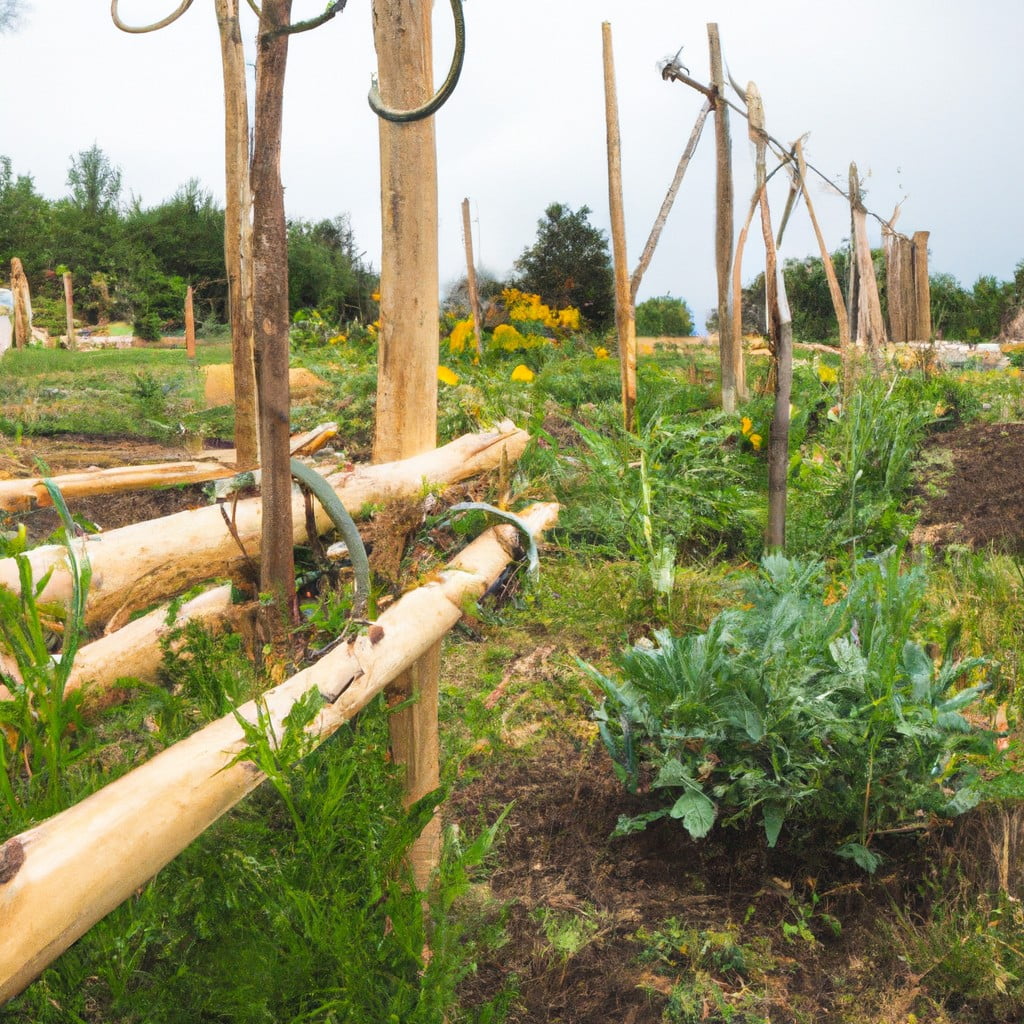Regenerative farming enhances the quality of food by boosting nutrient content, improving flavor, and bolstering resilience to weather extremes and pests.
Regenerative farming significantly enhances the quality of food by improving the health and fertility of the soil it grows in.
This agricultural approach focuses on restoring soil health, increasing biodiversity, and enhancing ecosystems, resulting in crops that are more nutrient-dense and flavorful.
The following sections will delve deeper into how regenerative farming achieves this, the scientific evidence supporting these claims, and the broader benefits of this sustainable farming method.
Key takeaways:
- Regenerative farming enhances food quality and improves flavor.
- It focuses on restoring soil health and increasing biodiversity.
- Healthy soil leads to more nutrient-dense and flavorful produce.
- Microorganisms in the soil mineralize nutrients for plant uptake.
- Regenerative farming improves the nutritional content of our food.
Look Inside:
Understanding Regenerative Farming

Regenerative farming revolves around principles aimed at revitalizing the health and biodiversity of soil ecosystems. Rather than depleting nutrients, these organic methods work to enhance the soil, proving beneficial in the long term.
Techniques employed commonly include agroforestry, cover cropping, and rotational grazing. Each of these strategies addresses specific aspects of soil health and fertility, leading to vibrant ecosystems teeming with life.
Notably, these methodologies eschew synthetic fertilizers and pesticides, instead relying on natural processes.
Impact On Soil Health
By promoting natural soil restoration processes, regenerative farming naturally enhances the soil’s organic matter content. This organic matter serves as a reservoir for essential nutrients, nourishing plants and maintaining a favorable soil structure.
The process also sequesters carbon, reducing greenhouse gas emissions, while improving the soil’s water-holding capacity. Increased soil microorganism activity means healthier, more robust crops that are more resistant to disease and pests.
Hence, the vitality of the soil significantly influences the health and nutritional content of the food produced.
How Does Regenerative Farming Restore Nutrient Density in Food?
Regenerative farming practices revive soil health by promoting biodiversity and fostering natural ecosystems. This shift from conventional to regenerative systems includes minimal tillage, in turn, preserving soil structure and the beneficial organisms living within it.
Furthermore, diverse crop rotations and cover crops prevent nutrient depletion, as each plant variety has its own nutrient uptake style. As a result, the nourishment that plants get from the revitalized soil packs the produce with higher nutrient levels.
Through such practices, the vitality and health of the food we eat is fundamentally improved.
Regenerative Farming and Food Quality
Regenerative practices yield fruits, vegetables, grains, and meat of exceptional quality. They do so by focusing on soil health, which directly impacts what grows in it. Farmers using these methods eschew synthetic fertilizers and pesticides and instead use organic matter, such as compost, to enrich soil fertility naturally.
The healthier soil promoted by regenerative farming provides an optimal environment for roots to access nutrients and for beneficial microbial activity to flourish. This, in turn, leads to crops with higher nutrient content and more robust flavors. Furthermore, it produces healthier and more resilient plants that are better equipped to withstand environmental threats such as harsh weather and pests. Thus, farming that repairs the earth also ends up providing us with superior-quality food.
FAQ
Could regenerative agriculture increase the nutritional quality of our food?
Yes, regenerative agriculture has the potential to increase the nutritional quality of our food by enhancing the variety of bacteria and fungi, which can make the food more nutrient-dense.
What are the benefits of regenerative farming?
Regenerative farming benefits include the production of high-quality, nutrient-dense food, improvement of land quality, and the promotion of productive farms along with healthy communities and economies.
What impacts can regenerative agriculture have on the quality of soil?
Regenerative agriculture techniques, namely the use of living roots and cover crops, can significantly enhance soil health by reducing erosion, improving water retention, bolstering biodiversity and contributing to the overall fertility and quality of the soil.
What is the relationship between regenerative agriculture nutrition and food security?
Regenerative agriculture enhances food security by improving soil health, increasing biodiversity, reducing atmospheric carbon, and consequently promoting the growth of nutritionally rich crops.
How does regenerative agriculture contribute to food diversity and diet quality?
Regenerative agriculture contributes to food diversity and diet quality by embracing crop diversity and rotation, leading to a wider variety of nutritious foods being produced and consumed.
Can regenerative farming methods influence the taste of our food?
Yes, regenerative farming methods can influence the taste of our food by improving soil health which leads to crops with a richer nutrient content and more flavorful profile.
What roles do cover crops and agroforestry play in the nutritional content of food in regenerative agricultural systems?
Cover crops and agroforestry in regenerative agricultural systems help to improve soil health and fertility, which in turn increases the nutritional content of the food produced.




